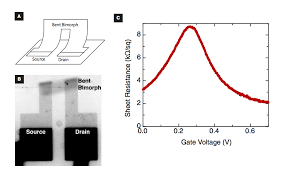
Breaking News
 Slovak PM Fico Blast Brussels Warmongers, Wants No Part Of Western Europe...
Slovak PM Fico Blast Brussels Warmongers, Wants No Part Of Western Europe...
 83% Of Hungarians Fear Foreign Interference In 2026 Election; New Poll Finds
83% Of Hungarians Fear Foreign Interference In 2026 Election; New Poll Finds
 Luxury Cars, Private Villas And Stacks Of Cash: How Somali Fraudsters Spent Minnesotans' Money
Luxury Cars, Private Villas And Stacks Of Cash: How Somali Fraudsters Spent Minnesotans' Money
 $40B FED Buying Spree Kicks Off QE's Return
$40B FED Buying Spree Kicks Off QE's Return
Top Tech News
 This tiny dev board is packed with features for ambitious makers
This tiny dev board is packed with features for ambitious makers
 Scientists Discover Gel to Regrow Tooth Enamel
Scientists Discover Gel to Regrow Tooth Enamel
 Vitamin C and Dandelion Root Killing Cancer Cells -- as Former CDC Director Calls for COVID-19...
Vitamin C and Dandelion Root Killing Cancer Cells -- as Former CDC Director Calls for COVID-19...
 Galactic Brain: US firm plans space-based data centers, power grid to challenge China
Galactic Brain: US firm plans space-based data centers, power grid to challenge China
 A microbial cleanup for glyphosate just earned a patent. Here's why that matters
A microbial cleanup for glyphosate just earned a patent. Here's why that matters
 Japan Breaks Internet Speed Record with 5 Million Times Faster Data Transfer
Japan Breaks Internet Speed Record with 5 Million Times Faster Data Transfer
 Advanced Propulsion Resources Part 1 of 2
Advanced Propulsion Resources Part 1 of 2
 PulsarFusion a forward-thinking UK aerospace company, is pushing the boundaries of space travel...
PulsarFusion a forward-thinking UK aerospace company, is pushing the boundaries of space travel...
 Dinky little laser box throws big-screen entertainment from inches away
Dinky little laser box throws big-screen entertainment from inches away
 'World's first' sodium-ion flashlight shines bright even at -40 ºF
'World's first' sodium-ion flashlight shines bright even at -40 ºF
Progress to human cell sized transforming robots made from atomically thin paper

* prototypes three times larger than a red blood cell have been made
* they are working on the microscale actuator muscles
Above – Graphene-glass bimorphs can be used to fabricate numerous micron-scale 3-D structures, including (top to bottom) tetrahedron, helices of controllable pitch, high-angle folds and clasps, basic origami motifs with bidirectional folding, and boxes. Credit: Marc Miskin, Cornell University
The machines move using a motor called a bimorph. A bimorph is an assembly of two materials – in this case, graphene and glass – that bends when driven by a stimulus like heat, a chemical reaction or an applied voltage. The shape change happens because, in the case of heat, two materials with different thermal responses expand by different amounts over the same temperature change.



